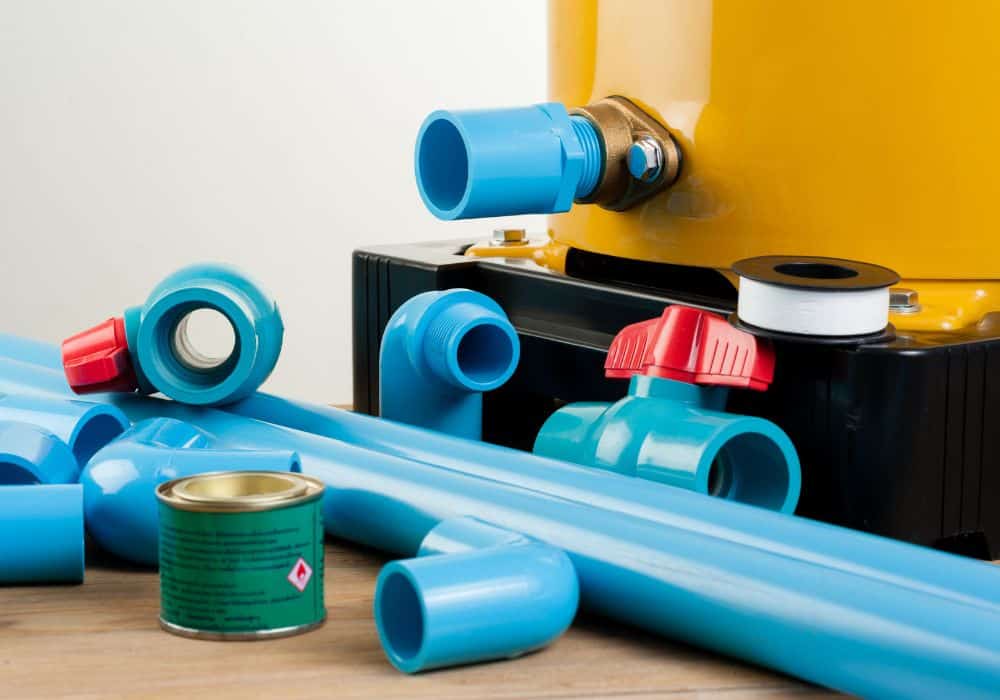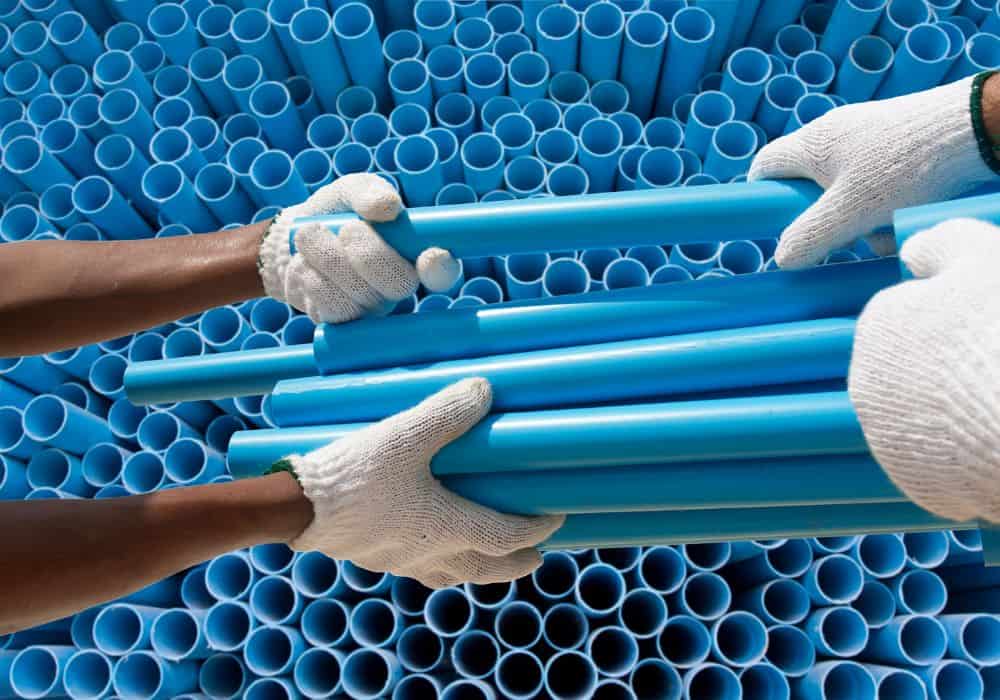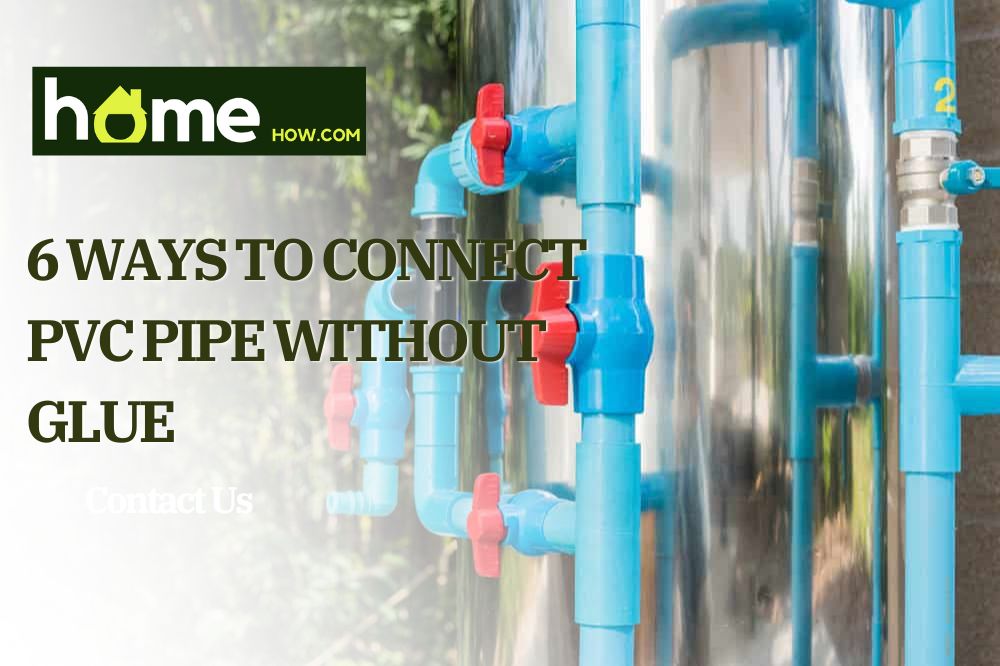Have you been wondering if there is an alternative to glue when connecting PVC pipes? The answer is yes and there is more than one method you can choose from, especially in a domestic setting. Many of these methods are also quick, easy, and very low-budget ways to connect your PVC pipes without glue.
In this article, we cover six alternatives to glue, as well as what PVC pipes are and what the benefits of using PVC pipes are compared to other pipe materials. So read on to find out which alternative to glue best suits you.
How to Connect Pvc Pipe Without Glue
What is PVC Pipe?
The letter combination PVC stands for polyvinyl chloride, meaning that PVC pipes are made from a plastic and vinyl combination material. PVC was developed by accident when Dr. Waldo Semon, an employee of BF Goodrich, tried to invent a method for bonding metal and rubber in 1925.
His discovery remained virtually unused for nearly a decade. It was in the late 1930s when PVC was found to be highly shock absorbent. This led to PVC being used in long-lasting tire treads. PVC pipes were invented two decades later when the machine called an extruder was first used to push them into hollow pipes.
Benefits of PVC Pipe
There are many benefits to using PVC pipes. They are very resistant to corrosion, unlike old iron pipes. Not only are they invulnerable to external corrosion when underground they are also resistant to internal corrosion. The pipe break rate is the lowest when compared to cast iron, concrete, ductile iron, steel, or asbestos-cement pipes.
PVC pipes also have excellent resistance to chemicals that can eat through other pipe materials. The smooth inside lining in PVC pipes reduces water flow resistance, resulting in fewer blockages than, for example, in clay or copper pipes.
Further benefits of PVC pipes include quicker installation times, high flow rates for water transfer, leak-free joints, long service life, and lower costs. The long life span of PVC pipes means efficient functioning, which reduces the need for maintenance and ongoing work on the pipe.
Where Are PVC Pipes Used?

The properties of PVC pipes make them versatile and suitable for multiple purposes. They are used in plumbing. They can carry water and gases as well as handle chemical waste. PVC pipes can be used in underground projects as well as above the ground inside buildings.
They can even be used outside the above ground as long as they include UV inhibitors and stabilizers to protect against UV radiation. They will also need to be painted with water-based latex paint when used outdoors above the ground.
As well as water distribution and handling chemical waste, PVC pipes can be used, for example, in building infrastructures in the exhaust and air ventilation systems and cable insulation. PVC pipes can be used in agriculture for water irrigation, sprinklers, and spraying of pesticides and fertilizers.
How to Connect PVC Pipe Without Using Glue?
There are several methods you can use to connect PVC pipes without glue. To help you decide on the best alternative for you, we have included information on six simple non-glue methods for connecting PVC pipes below.
Method 1 – Threaded PVC Pipe
There are different types of thread options for PVC pipes. Most of the common threads have sharp internal threads inside a small circular metallic object. Threading is very straightforward and you only need a rag, a tubing vise, and a vise grip-type vise. This video is great for a visual demonstration of how to connect threaded PVC pipes.
- Start by wrapping cloth or a rag around the PVC pipe. Secure it in place with the vise.
- Next, place the threading tool on the pipe’s edge and turn clockwise. Whilst turning, press the threading tool into the pipe until the edge contacts the pipe’s end.
- Remove the clamp. Finish by cleaning the new threads using the rag.
Method 2 – Taping
Using strong, durable tape such as gorilla tape or duct tape will give you a seal that should last long and not leak.
- Begin by cutting off two small pieces of tape, about a third of an inch long.
- Next, place one piece of the tape lengthwise inside of your pipe and then over the lip to the outside of the pipe.
- Repeat the second step with the other piece of tape on the same end but on the opposite side of the pipe.
- Push the pipe into your fitting and press into it. You need to press it as firmly as possible.
- Test the connection by trying to pull the pipe out of the fitting. Because you have increased the diameter of your pipe with the tape, it should be extremely difficult to pull out.
- Wrap a layer of tape around the PVC joint to improve the seal.
Method 3 – Old Bicycle Inner Tube
This method is cheap, it will hold liquid, and you are unlikely to need to visit a hardware store. If you haven’t got an old inner tube ready, many local bike shops will give you a used inner tube for free.
- First, cut off a chunk of the inner tube. It needs to be a little longer than the depth of the fitting’s connector. The depths will vary but in most cases, about two inches of the inner tube will be enough.
- Next, slip the length of the inner tube you cut off over the end of your PVC pipe. It should be very snug. Ensure it hangs slightly over the lip.
- Insert your PVC pipe into the fitting. You will need to push hard as it will be extremely tight.
- Bend the overhanging section of the inner tube over the end of the fitting.
- Finally, check the connection. It is one of the best you will get using makeshift components, and the inner tube will serve as a gasket.
Method 4 – RTV Silicone
Using silicone is a quick and simple way to seal PVC pipes without glue. You must ensure that the pipe is completely dry before you apply the silicone.
- To prepare the pipe, remove all dust and debris using a damp cloth.
- Add a bead of silicone along the seam or gap of your PVC piping. Go around the hole perimeter.
- Wet your finger and smooth the silicone by swiping your finger over it.
Method 5 – Mechanical Connectors
Using mechanical connectors is a popular way to connect PVC pipes in domestic settings. They are simple to use and affordable. You can find information on mechanical seals in this video.
- Start by deburring your pipe with wire wool and remove any dirt with a damp cloth or towel.
- Reverse the nut, washer, and rubber washer onto the section of the pipe you wish to connect. The rubber washer should extend at least 1.5-2cm beyond the pipe and fit snugly.
- Slide the joint body onto the pipe, securing it against the rubber washer.
- Slide the nut and washer through the connecting pipe before it comes into contact with the joint.
- Tighten the bolt using a plumber’s wrench.
Method 6 – O-Ring Fittings
When you use this method to connect your PVC pipe, the O-ring provides a waterproof seal, and the steel ring crimps onto the inserted PVC pipe.
- The spigot end should have a chamfer of about 12 to 15 inches. Refer to the appendix of the O-ring joint chamfer and mark locations.
- Next, clean the socket and the ring groove with a clean cloth. The box you purchased the O-ring in should have detailed cleaning instructions.
- Check that the rubber ring is evenly distributed on the ring groove by running your finger around the ring.
- use lubricant on the spigot end. Pay particular attention to the chamfered area.
- Align the spigot and the socket and apply even force to push the stopper into the socket.
How to Undo PVC Glue And Fittings?

If you wish to remove glue from your PVC pipe connections, you can break the bond by heating the plastic. The temperature will need to be between 250 and 350 degrees Fahrenheit. At this temperature, the glue and the plastic will soften and you will be able to pull the pipe out of the fitting.
This method will also work to undo stuck fittings. The heat will soften the plastic pieces and allow you to remove them. However, if the temperature is too high, it will break the fitting, so watch your temperature carefully.
Conclusion
If you are looking to connect PVC pipes at your home without using glue, there are several options you can choose from. Most of them are not only quick and easy to do but low cost, too.
We hope you have found an alternative to gluing PVC pipes that suits your needs. If you would like to ask us anything about how to connect a PVC pipe without glue, you can use the comments section for your questions. You can also let us know in the comments which method you tried and how it went.
